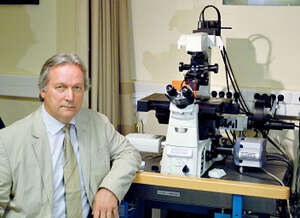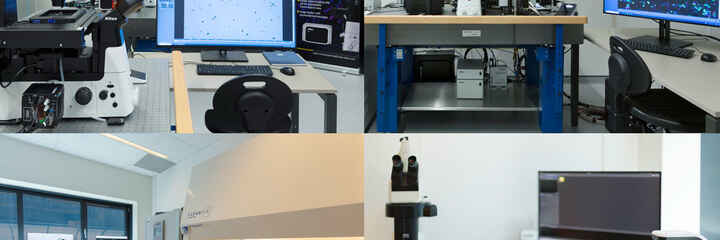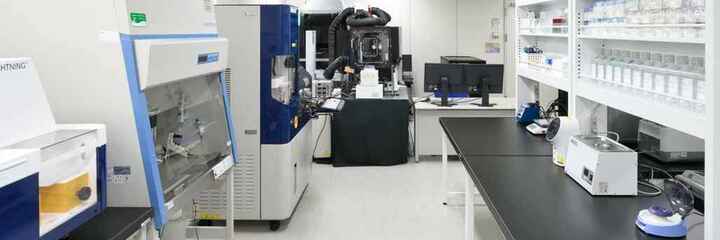Tamas Freund, Ph.D. and Istvan Katona, Ph.D.

Institute of Experimental Medicine of the Hungarian Academy of Sciences (IEM HAS)
Budapest, Hungary
Please tell us about your research.
The mission of our research institute is to carry out cutting-edge discovery research, which will reveal fundamental principles of physiological and pathophysiological operation of the nervous system. We integrate research in the field of molecular and cellular neuroscience into a functional context at the circuit and systems levels, and then test the translational implications of our findings in different models of brain disorders. My research group is primarily focusing on the normal and pathological (epileptic, ischemic) activity of cortical networks, with particular attention to the generation of behaviour-dependent population discharge patterns (theta and gamma oscillations, hippocampal sharp waves). Anatomical, in vitro, in vivo electrophysiological, pharmacological and molecular techniques are combined to elucidate the functional roles of inhibitory cell types in the control of population synchrony and synaptic plasticity in the hippocampus, their local and subcortical modulation via selective afferent pathways (GABAergic and cholinergic septal, as well as serotonergic raphe input) and pre- or postsynaptic receptors. This approach has led to several breakthrough achievements like the discovery of the compartmentalization of endocannabinoid signaling at the nanoscale level and its cell type-specific contribution to neurological disorders (culminated in Nature Medicine, 2008, 14:923-30) or the discovery of a new fast synaptic regulatory mechanism of cortical activity by subcortical neuromodulatory systems (Science, 2009, 326:449-53).
What applications do you use the Nikon microscope systems for?
Our institute established a special collaboration with Nikon in 2010. In the framework of this collaboration, our researchers use four different setups in a dedicated imaging facility. An A1 R confocal microscope primarily serves investigations at the molecular and cellular levels together with an N-STORM system equipped with a confocal, which is used to correlate morphological and molecular properties of identified subcellular compartments of neurons in a quantitative manner. The third setup combines patch-clamp electrophysiology with confocal imaging to correlate presynaptic and postsynaptic physiological signals. The fourth setup is a spinning disc system in combination with patch-clamp setup to correlate synaptic events with population activity. It is difficult to select which applications are the most important, because more than 60 of our researchers used these systems in about 75 projects within the last two years. But definitely our new N-STORM super resolution microscope will open new horizons for several of our research projects.
What was the deciding factor for choosing Nikon N-STORM super-resolution microscope?
Overall, we had two important reasons for choosing Nikon for this collaboration. First of all, Nikon is a world leader in the development of cutting-edge microscopy techniques and this special collaboration lets us test their new systems for neuroscience applications soon after their announcement. The N-STORM system is a prime example. The second reason was the outstanding local 24/7 support of Nikon. Optimal calibration and everyday maintenance is a must when many people are using the same system for several distinct applications and the systems are in constant demand.
What is it about the Nikon N-STORM system that you now value after actually using them?
We are very much impressed by the performance of the new N-STORM system. It provides unprecedented spatial resolution for a fluorescent microscope, and the multicolor feature with its high throughput makes this technology superior to previous microscopic approaches, such as electron microscopy.
Although we have had this system with all the required additional equipment like a high power imaging laser for less than a year, already five research groups are using it routinely for their projects. The first findings have already been published and several others are in the manuscript phase.
The STORM technique is ideal to study molecules at synapses in the brain.

What other current microscope system or technology would you like from Nikon?
It is hard to choose, because there are many exciting new developments out in the field now. For the STORM approach, the most important new development will be the possibility of much faster imaging, particularly of live cells. Therefore, we are particularly interested in future N-STORM developments to see how they can be used for physiological experiments in neuroscience.



